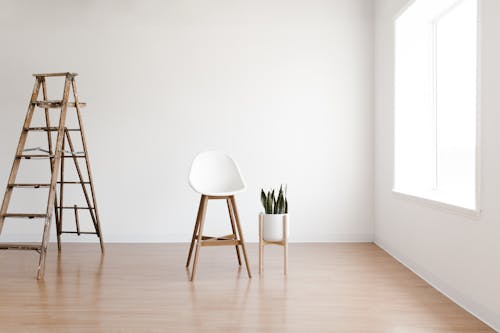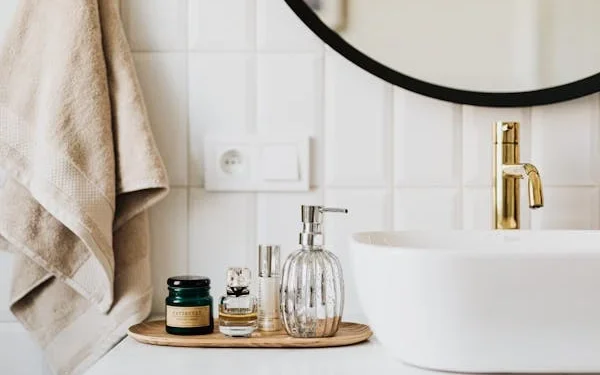In today’s fast-paced world, many of us are looking for ways to simplify our lives. One powerful way to achieve this is through decluttering your home. Minimalism is not about owning fewer things; it’s about owning only the things that add value to your life. When you begin to declutter, you not only free up physical space but also create mental clarity. Whether you’re tackling one room at a time or looking to declutter your entire home, there are simple, effective strategies to help you create a more organized, serene environment.
1. Start with a Clear Vision
Before diving into decluttering, it’s essential to establish a clear vision for what you want your space to look like. Minimalism is all about simplicity, so ask yourself which items truly bring you joy and which ones just take up space. Visualize how you want each room to function and feel—this will help guide your decision-making throughout the process.
Don’t worry about achieving perfection right away. The goal is to create a space that feels comfortable and organized without overwhelming yourself with unrealistic expectations.
2. Tackle One Room at a Time
Decluttering can feel overwhelming if you try to tackle the entire house all at once. Instead, break it down by focusing on one room at a time. Start with areas that are most used, like the living room or kitchen, as these will have the greatest impact on your daily routine.
For each room, set a specific timeframe to work in so you don’t get sidetracked. You can start with a 30-minute session and gradually increase your time as you become more accustomed to the process.

3. The “One In, One Out” Rule
One of the easiest ways to maintain a clutter-free home is by adopting the “one in, one out” rule. Every time you buy something new, donate or discard an item you no longer need. This helps prevent accumulation of unnecessary belongings, ensuring that your home stays streamlined and organized.
It’s a simple but effective strategy that can be applied to clothing, gadgets, and even furniture. By being mindful of your purchases, you’ll naturally avoid filling up your space with items you don’t truly need.
4. Organizing Your Kitchen
The kitchen is often one of the most cluttered areas in the home due to the many gadgets, tools, and items it houses. Start by removing any appliances or utensils that you don’t use regularly. For example, if you haven’t used that bread maker in a year, it’s time to consider donating it or storing it in a less accessible place.
Use clear containers or drawer organizers to store food and utensils, which will help you identify what you have and prevent items from getting lost or forgotten. Take time to evaluate your pantry as well. Throw away expired goods and organize your items by type, so you know exactly what’s on hand.
5. Simplify Your Living Room
The living room often serves as the central gathering space, but it can also become a catch-all for clutter. Begin by clearing off surfaces like coffee tables and side tables. If you have too many decorative items, select only the ones that you truly love or that serve a purpose.
For seating, consider using multifunctional furniture. A sofa with built-in storage or a coffee table with drawers can help you hide away clutter when not in use. Keep your space clean and functional by using baskets or bins to store remote controls, magazines, and other small items.
6. Decluttering Your Bedroom for Better Rest
A cluttered bedroom can affect your ability to unwind and get a restful night’s sleep. Begin by getting rid of items that don’t belong in the bedroom, such as laundry or paperwork. Make sure your closet is organized with only the clothing that fits and is in season. Donate or sell anything that no longer serves you.
For your nightstand, keep only essential items, such as a lamp, clock, and perhaps a small plant. Avoid cluttering the top with unnecessary objects like half-empty glasses or random knick-knacks. Creating a minimalist environment will encourage relaxation and improve your sleep quality.
7. Streamline Your Closet
Closet space can easily become overwhelmed with excess clothing, shoes, and accessories. A good rule of thumb is to follow the “three-year rule”: if you haven’t worn an item in the past three years, it’s time to part ways with it. Only keep clothing that fits well and that you wear regularly.
Organize your closet by category—group similar items together (pants, dresses, shirts) and make use of hangers, shelves, and bins to keep everything tidy. Seasonal items can be stored in bins or under the bed to free up space for everyday clothing.
8. Simplify Your Bathroom
The bathroom is another area where clutter can accumulate quickly, particularly with products that have long since expired. Start by going through your toiletries and makeup, discarding anything that’s past its expiration date or that you rarely use. Keep only the essentials, such as toothpaste, shampoo, and a few skincare items.
To maximize storage, use drawer organizers or baskets to corral smaller items, and consider using clear containers so you can easily see what you have. Opt for simple, minimalist designs for your towels and other accessories to create a calm and streamlined space.

9. Implement Digital Decluttering
Clutter doesn’t only exist in the physical realm—it can also accumulate digitally. Take time to declutter your devices by deleting unnecessary files, emails, and apps. Organize your digital photos into albums and consider backing them up on a cloud service. A clean, well-organized digital space can greatly reduce stress and help you stay focused.
Consider setting up a monthly routine to check your devices for clutter so that you don’t have to face a massive digital cleanup all at once.
10. Maintain Your Minimalist Space
Decluttering is an ongoing process, not a one-time event. To maintain a minimalist home, be intentional about what you bring into your space. Regularly assess your belongings and remove anything that no longer serves you or aligns with your lifestyle. Schedule time each month to tidy up and make sure everything is in its place.
Living with less doesn’t mean living without—it means curating a space that is more aligned with your needs and values. By implementing minimalist strategies in every room, you’ll create a home that is functional, calming, and clutter-free.














